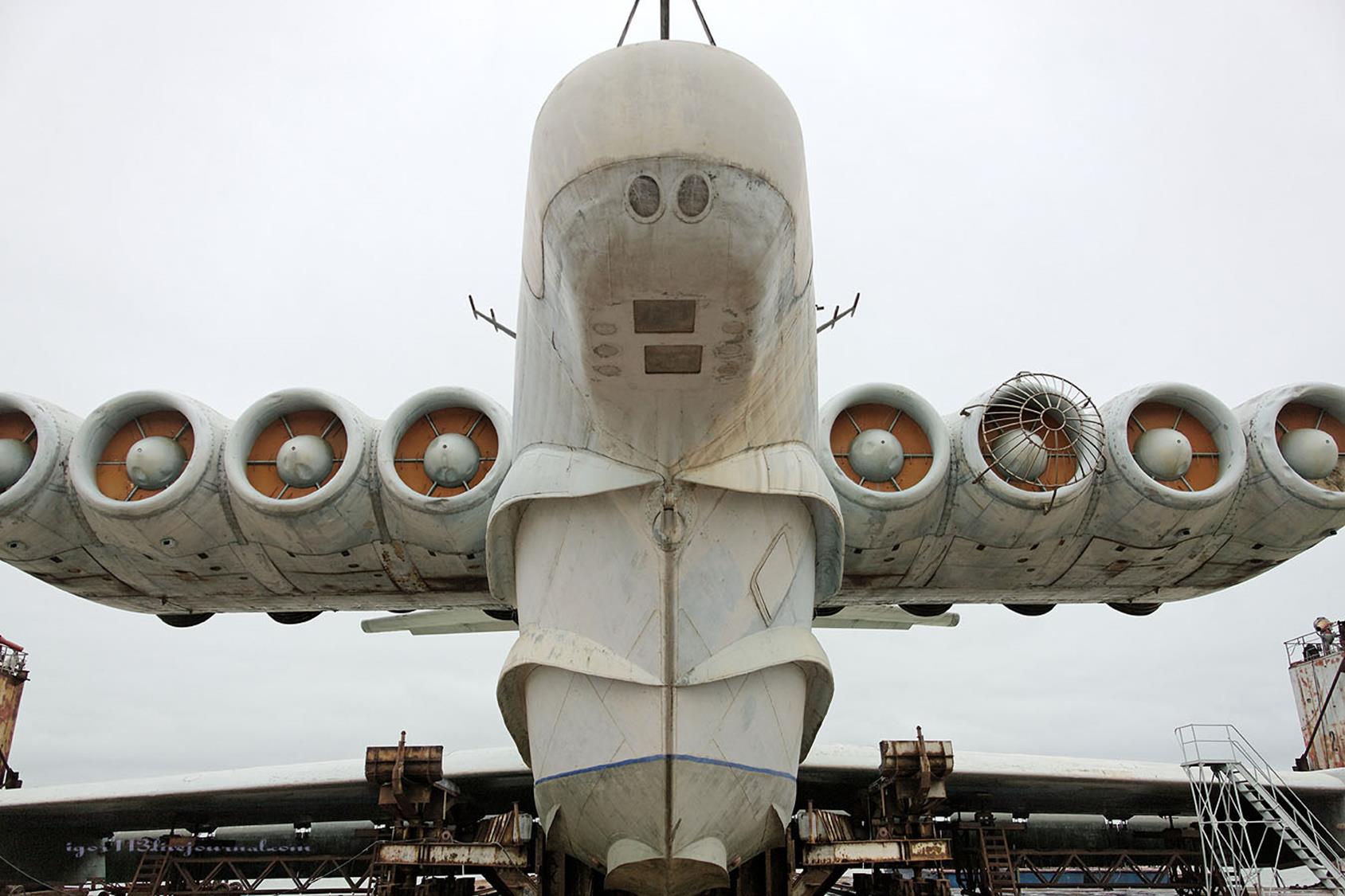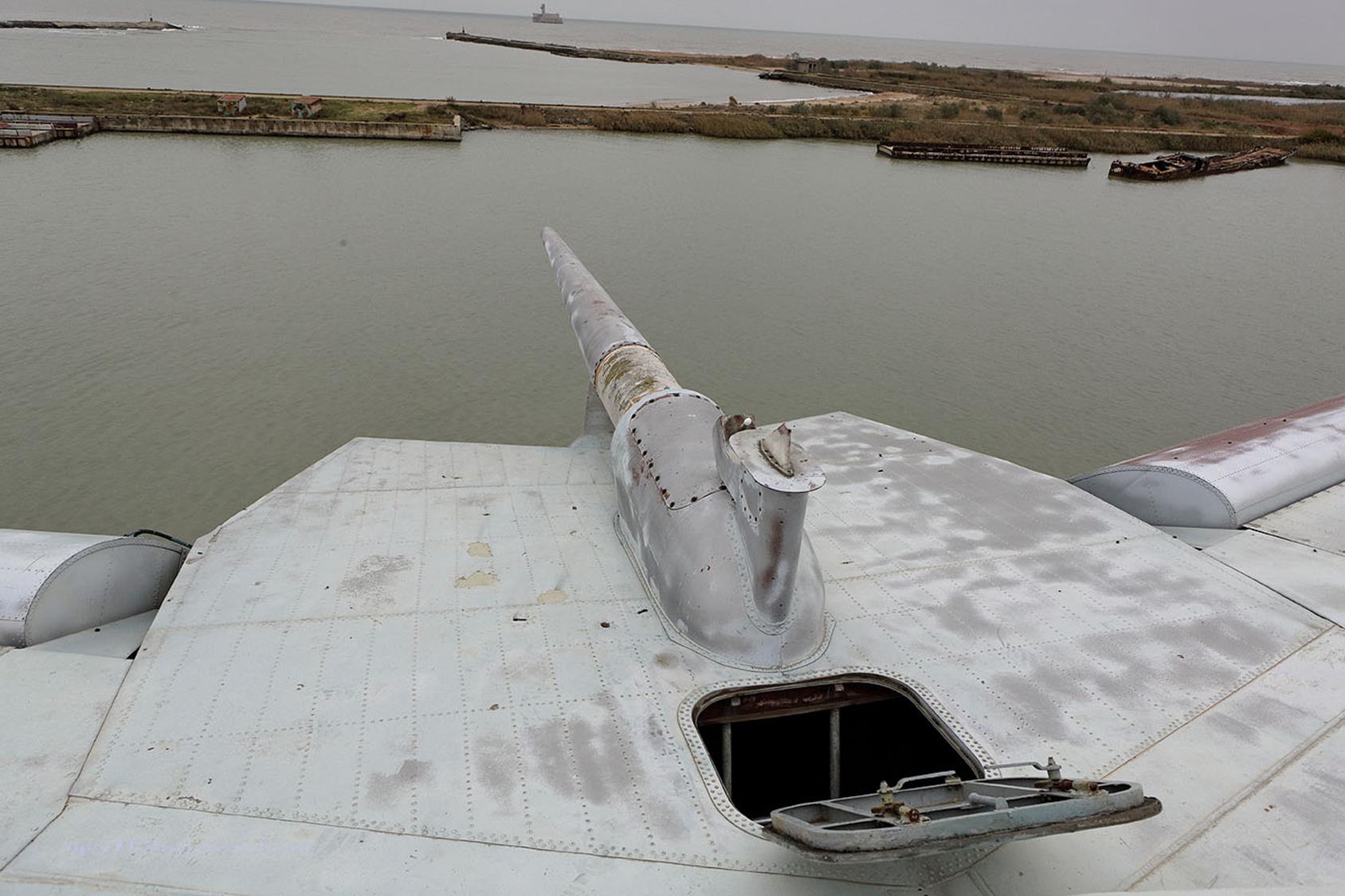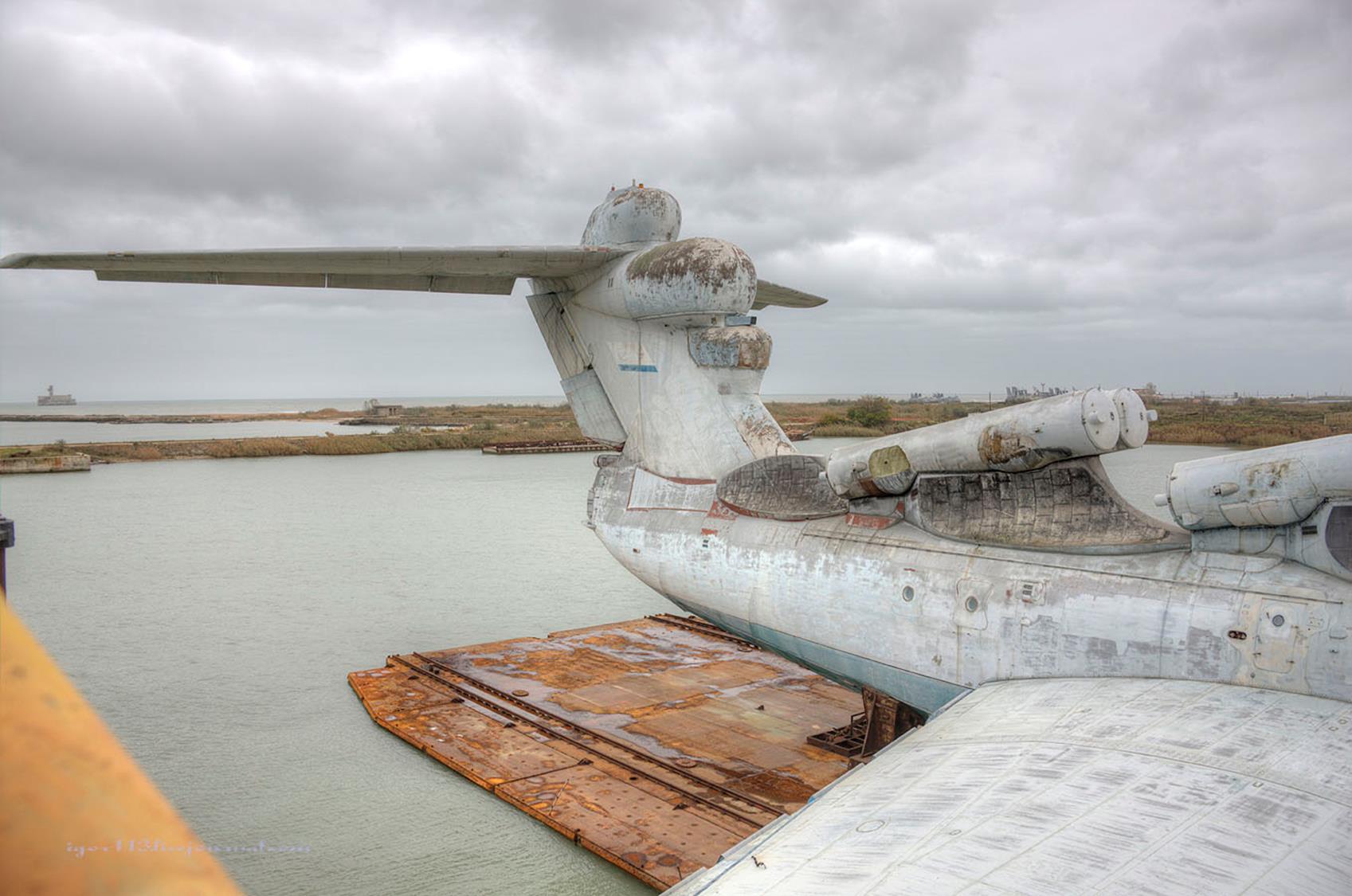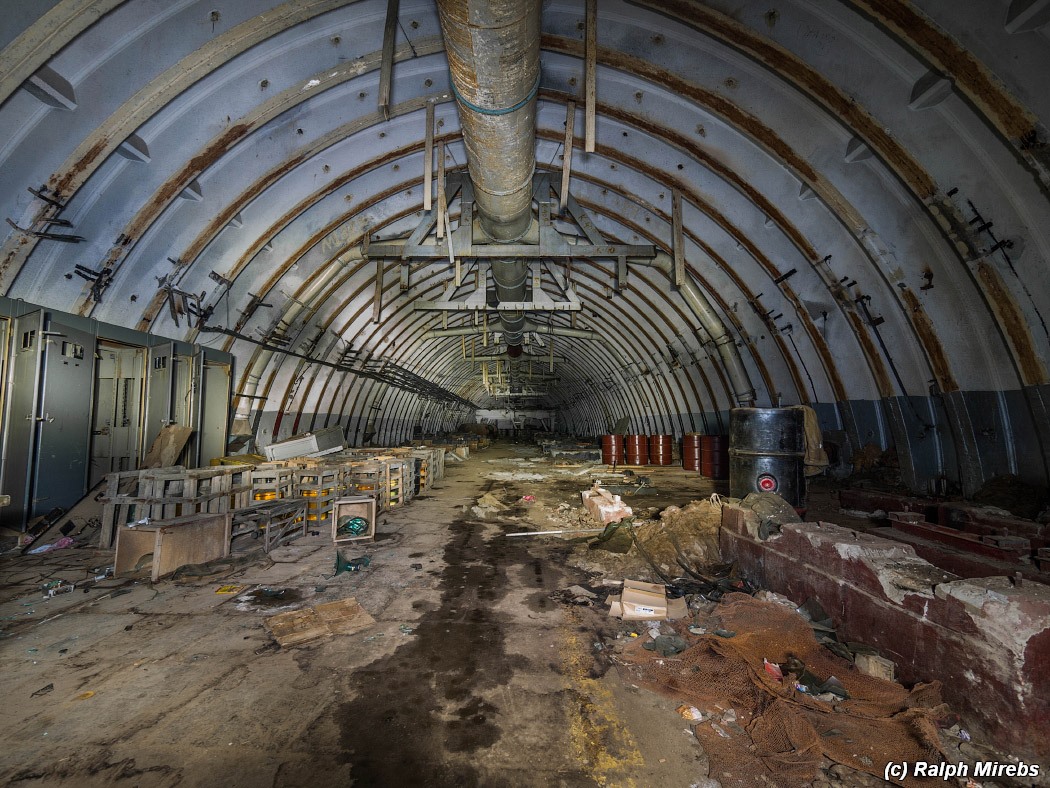Abandoned Lun ekranoplan
Lun, the first in the family of military missile-carrying ekranoplans weighing 400 metric tons, was put into service in 1987.
The ship was armed with three pairs of cruise missiles type 3M80 or 80M Moskit (NATO: SS-N-22 Sunburn).
Lun is mounted on a float that was designed specifically for it, with a carrying capacity of 500 metric tons.
The Lun doesn’t have an undercarriage apart from a hydroski, thus it cannot get ashore on its own.


The overall impression of the ekranoplan: a plane designed in a shipyard using the technology available. That’s why its features are so unique.

There is a marine radar system under this nose cone.

The Lun is fitted with eight engines. The same engines were installed on Il-62 planes, if I’m not mistaken, but here we can see their maritime version with variable-angle nozzles.

The view of the nozzles.


The view from the wing.

The crew of the ekranoplan consisted of 7 officers and 4 professional soldiers (midshipmen).It could stay self-sufficient for 5 days.
The bottom view of the engine pylons.

The view of the flaps from under the wing after they have been lowered. This is the position they take before the engines start pumping air under the wing and the ekranoplan rises above the water surface and starts moving.

The view of the flaps from the tail part of the ekranoplan.

Flap adjustment and blocking device.

The left wing and the floats at the end.

The surface of a float.

The view of the float from the hull.



And this is the special corrosion protection of the hull (cathodic protection).

A hydroski is used for softening the landing. Thanks to that the ekranoplan can take off and land on the surface of the water with waves up to 5 meters (16.5 ft).

The view of the hydroski from the tail.

The hinge mount of the hydroski.

The construction elements of the ekranoplan
The view of the tail unit.

Horizontal stabilizers.

One of the two fire positions.

We’ll go inside later

Vertical stabilizers.

Heat protection of the hull from the incandescent gas during rocket launches. It’s made out of the same material that was used for the Soviet space shuttle.

There are various radar systems under the tail unit and on it.

An ekranoplan carries six guided antiship Moskit 3M-80 missiles. Firing four of them defeats a ship of any size (including aircraft carriers), leading to its sinking.

A view from the wing: you can see the entrance door of the ekranoplan. During flotation the wings provide a low-angle ramp going down into the water, which is very useful when launching rescue equipment and getting people aboard.

The entrance is open.


The view of the right pylon.

The view of the left pylon.

The view of the fire position and the missile launchers from the cockpit.

The view from the right pylon.

The view of the cockpit and a weird asymmetrical fin.

The view of the cockpit from a pylon.



And now let’s climb onto the tail unit through this hatch.

The view of the left horizontal stabilizer.


The view forwards from the tail unit.

The signal lights mounted on the highest point of the ekranoplan.

And a few general views. The view from the float.



View from the shore

A float structure is in the front.

The fire position view from the inside (a preview for the next post)

Images @ igor113






